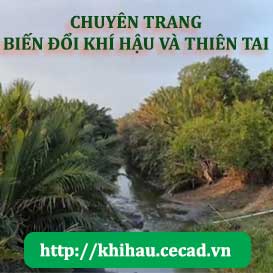Economic Efficiency and Environmental Impacts after one-year operation of mushroom-cultivation group in Thanh Hoi commune
One year after the training course on “Technology and practice of Oyster mushroom cultivation from rice straw”, on the 15th November 2011, the Center for Environment and Community Assets Development (CECAD) conducted a quick assessment on the economic efficiency and environmental impacts of the mushroom cultivation program in Nhot hamlet, Thanh Hoi commune, Tan Lac district, Hoa Binh province.
Before the program was launched, all the collected rice straw after the harvest had been burnt by the local people in the hamlet, which resulted in serious air pollution. Moreover, since the burning spots were on the fields or the roadsides, the soil was hardened which reduced the fertility of the soil, which caused beneficial microorganisms and organisms to be killed and the roads were seriously damaged.
The technology transfer of oyster mushroom cultivation from Huong Nam Mushroom Center has been acquired easily and after one year, has been mastered by the local people in Nhot hamlet.
Economic Efficiency:
In 2011, the people grew 3 crops with estimated scales as followed:
– The first crop: they used 9 quintal of rice straw, archiving VND 45.360.000
– The second crop: they used 4 quintal of rice straw, archiving VND 20.160.000
– The third crop: they used 10 quintal of rice straw, archiving VND 50.400.000
Total revenue: VND 115.920.000
Expenditure
– 10 tents: VND 3.200.000
– Raw Materials: VND 2.515.000
Total cost: VND 5.715.000
Total profit: VND 110.205.000 (This profit included labor work)
In words: One hundred and ten million two hundred and five thousand Vietnam dong.
Environmental Impacts:
In 2011, the mushroom-cultivation group in Nhot hamlet processed 92 cubic metres of dry straw and transformed them to mushroom products which were sold in to the market. The by-products of the cultivation were continually used as organic fertilizers.
The residents in Nhot hamlet acknowleged the benefits of reusing straw and other agricultural wastes to generate income and to solve local envrionmental pollution.
Conclusion.
The people can easily master the technique of growing oyster mushroom from straw. This technology helps create local jobs, generate quite a high income and at the same time, alleviates environmental issues relating to air and land pollution.
The success of Mushroom-cultivation Group in Nhot hamlet has created new awareness to the people of reusing agricultural wastes and attracted other housholds’ interest in the region.
Noticing people’s demand for this technology, CECAD proposed a plan to support the residents in Buc hamlet, Tu Ne commune, Tan Lac district, Hoa Binh province in establishing Mushroom-growing Group and organizing training course on Oyster mushroom cultivation technique.
CECAD has a desire that in the near future, all the straw in Tan Lac district will be used and people’s living standards will be improved thanks to the income from mushroom.


